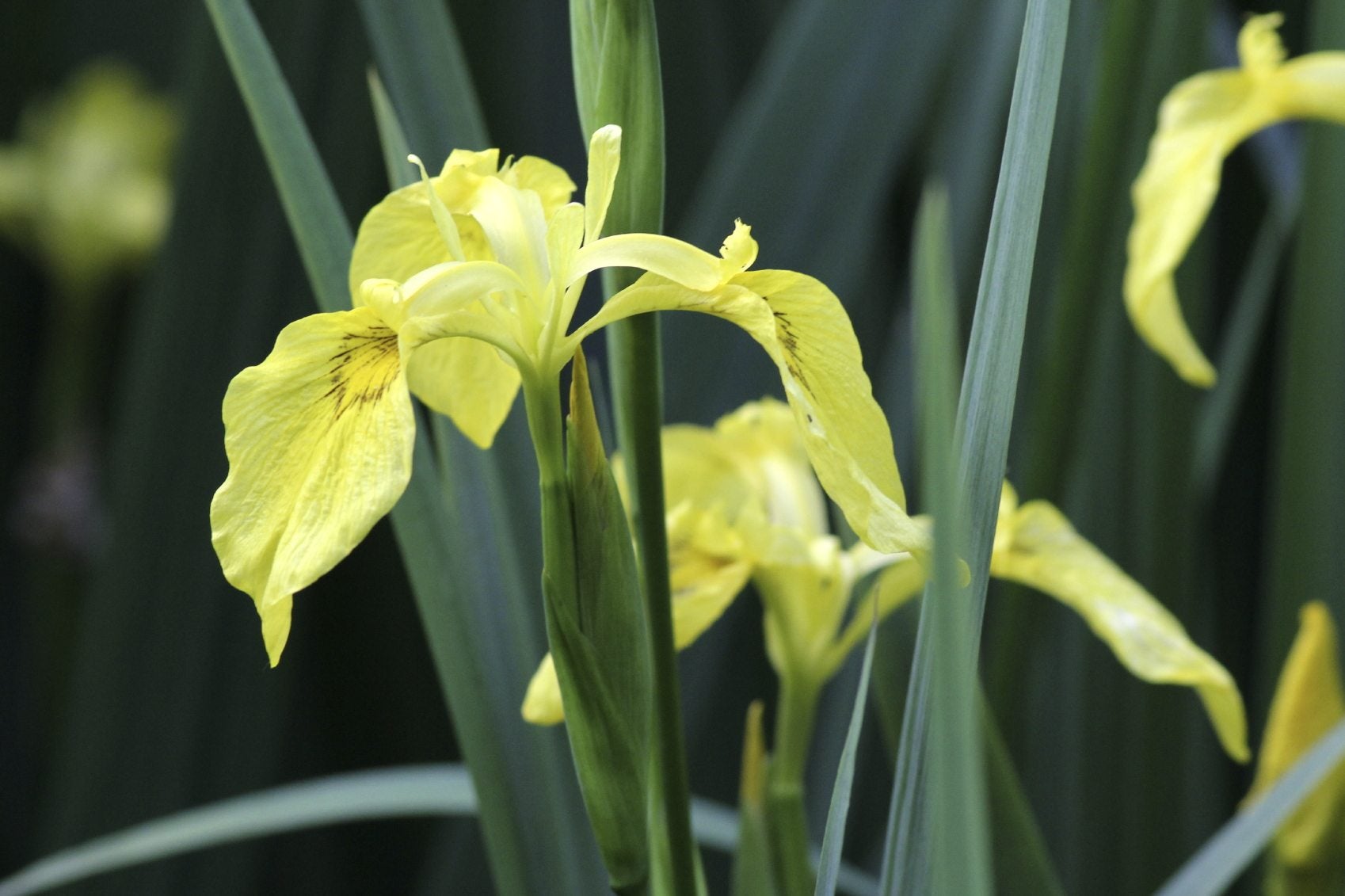Yellow Flag Iris Control: How To Get Rid Of Flag Iris Plants


There’s no doubt that yellow flag iris is a gorgeous, eye catching plant. Unfortunately, the plant is as destructive as it is lovely. Yellow flag iris plants grow like wildfire along streams and rivers, and are commonly found in ponds, irrigation ditches and other riparian areas where they create all sorts of trouble. For starters, yellow flag iris plants threaten native wetland vegetation such as cattails, sedges and rushes. The plant also blocks water flow and damages bird nesting sites and important fish habitat. These hardy plants are found across the United States, with the exception of the Rocky Mountains. Learn more about its control in this article.
Yellow Flag Iris Control
When not in bloom, yellow flag iris looks much like familiar cattails, but the resemblance stops there. The plant, which spreads by long rhizomes and by seed, is easy to spot by its sword-like leaves and the bright yellow blooms that appear in late spring and early summer. Large clumps of yellow flag iris can measure 20 feet (6 m.) across. When you consider that new plants are easily generated by floating masses of seeds, it isn’t difficult to understand why controlling yellow flag iris is so challenging. Unfortunately, yellow flag iris plants are available in many nurseries, where the popular perennials are valued for their ornamental value and for their ability to effectively control erosion. As a result, many gardeners are unaware of the damage that results when the plant escapes.
How to Get Rid of Flag Iris
Be prepared for a long haul, as total control of yellow flag iris may take several years. Small patches of young plants are best controlled by pulling or digging – a relatively easy task in wet soil. You may need to use a shovel to dig out mature plants, along with a pickax to get the long taproots. Wear sturdy gloves and long sleeves because the resins in the plant can irritate the skin. Be vigilant about cleaning up debris because even tiny pieces of rhizomes can generate new plants. Don’t burn the plants because yellow flag iris re-sprouts quickly after burning. You can also control the plant by cutting stems and leaves below the waterline before the plant blooms and has an opportunity to go to seed. Don’t disturb the soil more than necessary; you’ll only create monster plants with stronger roots. Large infestations of yellow flag iris may require use of chemicals, usually in the form of products manufactured specifically for aquatic use. Consult a professional, as many states limit use of herbicides in aquatic environments. Note: Any recommendations pertaining to the use of chemicals are for informational purposes only. Chemical control should only be used as a last resort, as organic approaches are safer and more environmentally friendly.
Sign up for the Gardening Know How newsletter today and receive a free copy of our e-book "How to Grow Delicious Tomatoes".

A Credentialed Garden Writer, Mary H. Dyer was with Gardening Know How in the very beginning, publishing articles as early as 2007.